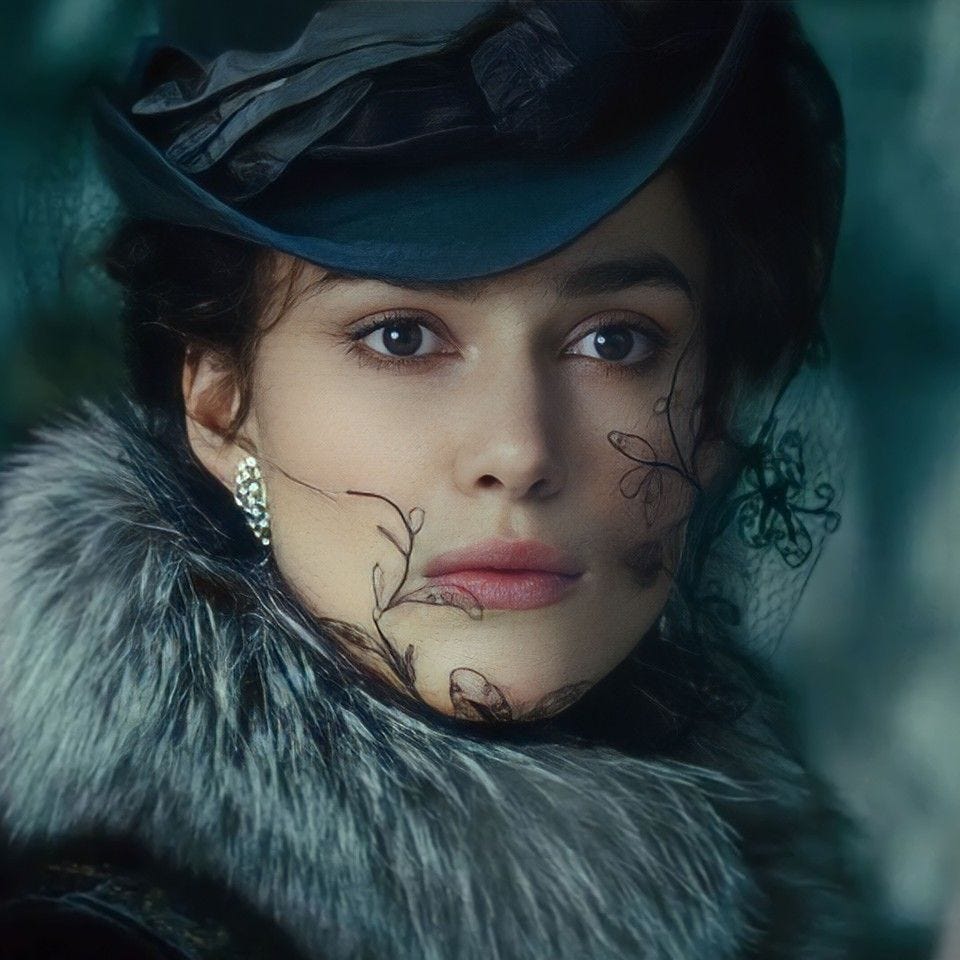why getting what we want never feels like enough
Week 3/52 · 12 Classics in 12 Months : Anna Karenina
By the time Anna finally leaves her marriage for Vronsky, you’d think she would be satisfied. She got the man, the passion, the escape she longed for. But instead of peace, what I see is her spiral—faster, darker, more restless than before.
That’s when it hit me: Tolstoy wasn’t just writing about adultery or society’s disapproval. He was writing about The Wanter—that insatiable part of us that convinces us the next thing—the new love, the different life, the shiny opportunity—will finally quiet our hunger. Only it never does.
Anna is The Wanter in perfect form. She longs for freedom, romance, and belonging outside her marriage. But once she gets it, the hunger doesn’t go away—it only shifts. Her dissatisfaction isn’t really about Vronsky at all, but about The Wanter inside her. And Tolstoy shows us how relentless that hunger can be when it runs unchecked.
The Wanter, as my mentor defines it, is an aspect of human consciousness that comes into being at birth to ensure our survival. Its function is to do whatever it takes to make things better for us—without regard for others. It’s the root of our suffering and, paradoxically, also our ally to keep us alive.
Here’s the tragic irony: when carried to its extreme, the Wanter believes the only way out is to die. This is where suicide comes from. The insatiability turns in on itself, convinced annihilation is the only relief. The very thing that keeps us alive can also be the force that takes our life.
Watching Anna’s path, I can’t help but feel that if she keeps going down this road, that might be the direction her Wanter is driving her toward.
In the book I just published with my mentor, Wanter Dynamics & The Love We Are, our intention is to provide ancient ways, practices, and stories that help us rest back from the Wanter and live more from True Nature. To stop chasing and start remembering. To operate from something deeper, steadier, truer.
Reading Tolstoy while launching this book (this very week) felt uncanny—like he’d already drawn the perfect case study of what happens when we mistake external desire for internal peace. If you resonate with this and want to explore practices to support you on that journey, you can find the book here.
Yes, Anna’s story is extreme, but the insatiability she embodies is universal. The Wanter never rests. It’s been with us since the beginning of humanity, whispering there’s always something more, something better, something just out of reach.
Maybe that’s why Anna Karenina still cuts so close to the bone. It doesn’t just show us Anna’s downfall—it shows us the part of ourselves we wrestle with every day. Wanting more, different, new. Instead of resting in who we already are— which is loving, kind, compassionate, fulfilled, and joyous.
Once I saw Anna through the lens of The Wanter, she stopped reading as just a tragic heroine. She became a mirror. I could see myself in her restlessness, in her impatience, in that ache for something more. But I could also see the antidote: learning how the Wanter operates, letting it be our ally, and finding natural ways to rest back into True Nature before we let it run our lives into ruin.
So that’s where Tolstoy left me this week: face to face with The Wanter (man this guy was brilliant). Next week, I’ll share what it was like to push through the last 200 pages—and what finishing Anna Karenina taught me about integrity and keeping promises to myself.
xx
Aria Devi



